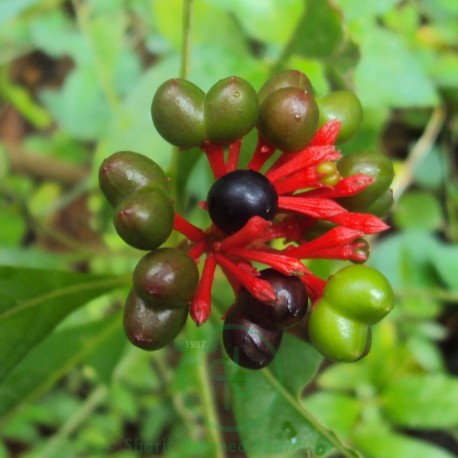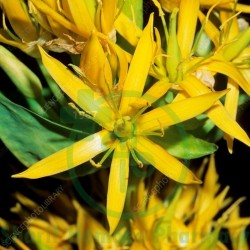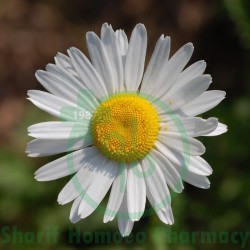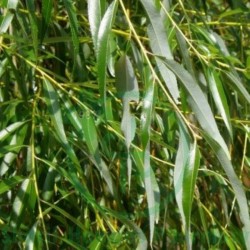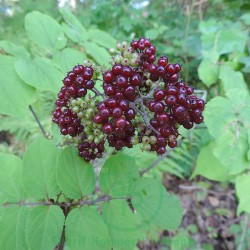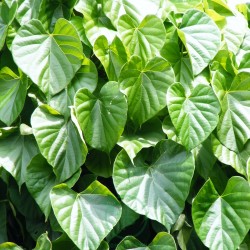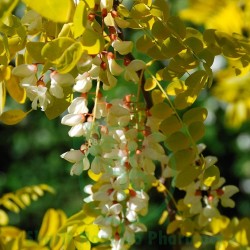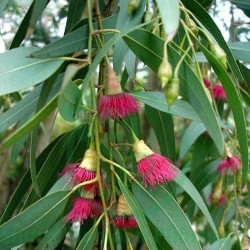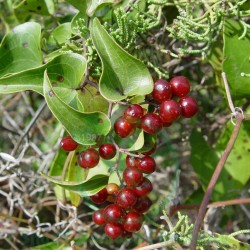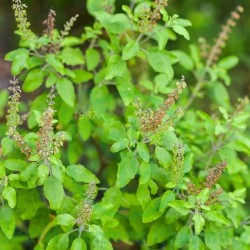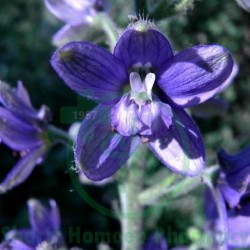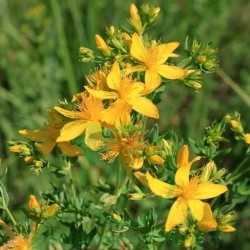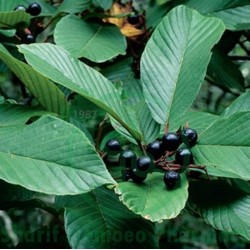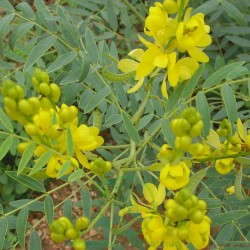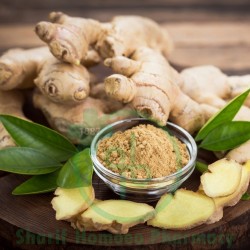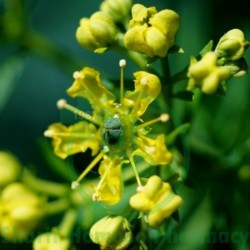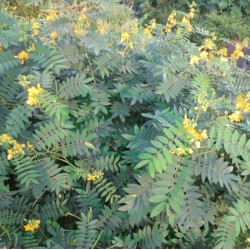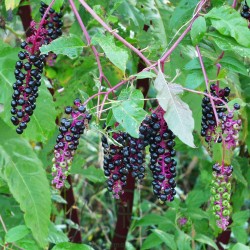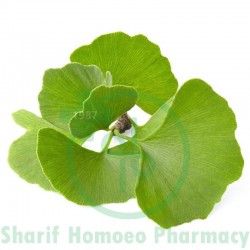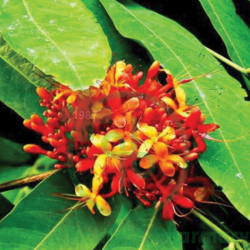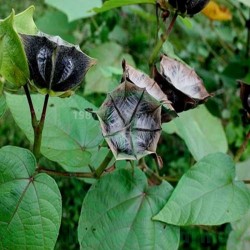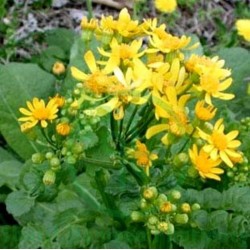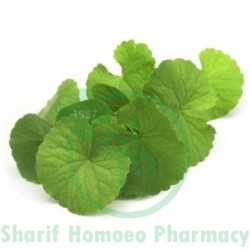No products
Rauwolfia Serp Q Mother
New product
Rauwolfia Serpentina (also known as Sarpagandha) is the most effective herb to address insomnia, high blood pressure, hysteria and urticaria naturally as per Ayurveda too. You get the concentrated effect of Homeopathic mother tinctures in tablets form. This does away with problems like evaporation, leak/spillage etc
Available
- Send to a friend
- Remove this product from my favorite's list.
- Add this product to my list of favorites.
More info
Rauwolfia serpentina, or‘Snakeroot’ or ‘Indian snake root, or ‘Sarpagandha’ ‘is a species of flowering plant in the family Apocynaceae. It is native to South and East Asia (Java & India). Rauwolfia serpentina root is bitter and acrid and used as laxative, diuretic, antidote to snake venom, expectorant and febrifuge, this plant is used medicinally both in the Modern Western Medical system and also in Ayurveda, Unani and Homoeopathy. Homeopathic preparation of the drug (from root) can be used effectively in hypertension and other disease conditions.
KEYWORDS- homoeopathy, reserpine, doctrine, mother tincture.
INTRODUCTION
Rauwolfia serpentina contains a number of bioactive chemicals, including yohimbine, reserpine, ajmaline, deserpidine, rescinnamine, serpentinine. Snakeroot depletes catecholamine and serotonin from nerves in the CNS. It was reported that Mahatma Gandhi took it as a tranquilizer during his lifetime. A compound which it contains called reserpine, is used to treat high blood pressure and mental disorders including schizophrenia. Due to its tranquillising effects on the brain it is used as a hypnotic and in meditation.
TAXONOMY- Rauwolfia (Rauwolfia serpentina) is an evergreen shrub that is a member of the dogbane or Apocynaceae family. More than 100 species are included in the Rauwolfia genus, and they are native to tropical and subtropical regions of the world, including Europe, Africa, Asia, Australia, and the Central and South Americas. Rauwolfia serpentina is native to the moist, deciduous forests of south east Asia, including India, Burma, Bangladesh, Sri Lanka, and Malaysia.
The plant usually grows to a height between 60 and 90 cm and has pale green leaves that are 7 to 10 cm long and 3.5 to 5.0 cm wide. The leaves are elliptical or lanceolate shaped and occur in whorls of 3 to 5 leaves. The plant has many shiny, black or purple, round fruits that are approximately 0.5 cm in diameter. It also has small pink or white flowers. The plant has a prominent tuberous, soft taproot that reaches a length between 30 and 50 cm and a diameter between 1.2 and 2.5 cm.
KINGDOM-Plantae
DIVISION-Magnoliophyta
CLASS-Magnoliopsida
ORDER-Gentianales
FAMILY-Apocynaceae
GENUS-Rauwolfia
SPECIES-Serpentina
HISTORY
R serpentina was used in folk medicine in India for centuries to treat a wide variety of maladies, including snake and insect bites, febrile conditions, malaria, abdominal pain, and dysentery. It was also used as a uterine stimulant, febrifuge, and cure for insanity. The plant was mentioned in Indian manuscripts as long ago as 1000 bc and is also known as sarpagandha and chandrika. The genus Rauwolfia was named in honour of the 16th-century German physician Dr Leonhard Rauwolf, who studied plants while travelling in India. Serpentina was selected for study due to its long, tapering, snake-like roots. The Indian physician Rustom Jal Vakil is considered responsible for introducing Rauwolfia to Western medicine. He collected data on patients treated with Rauwolfia for 10 years, from 1939 to 1949. In 1949, he published a watershed paper on the antihypertensive properties of R serpentina in the British Medical Journal. He presented his detailed results from treating 50 patients who had high blood pressure with the root of Rauwolfia. The results were remarkable and significant. By 1949, more than 90% of Indian physicians were using Rauwolfia in the treatment of high blood pressure. After Vakil’s original paper, more than 100 scientific articles were published throughout the world. With the scripts in the Atharva Veda, we have evidence of a traditional use of medicinal plants that is more than 3000 years old. It is estimated that about 80,000 species of plants are utilized in some form or other by the different systems of Indian medicine.
DOCTRINE OF SIGNATURE –
The roots of Rauwolfia Serpentina resembled with snakes. Thus, in Ancient Indian medicines it was used to treat snakes bites & hence named “Snake Root”.
HOMOEOPATHIC ASPECT
Homoepathy is a system of medicine which was discovered by Dr. Samuel Hahnemann, a German physician between the periods of 1790-1843. Dr. Hahnemann’s main aim was to “restore the sick to health through rapid and gentle method of treatment”.
Stuart Close, the author of the book “The Genius of Homoeopathy” defines ‘’Homoeopathy or Homeotherapy as the department of Science in general medicine which has for its principle objects the observation and the study of the action of remedial agents in health, disease, treatment and cure of the disease by medication, according to a fixed law or a general principle. The fundamental principles and homoeopathy are embodied in a system of doctrines, laws and rules of practice which were first formulated, named and systematically set forth by Hahenmann in his Organon of the Rational Art of Healing. By that, homoeopathy was given a name, individuality and a character which defines and identifies it for all time. Homoeopathy is based on the nature’s law which was stated as “Similia Simibus Curentur” means “let likes be cured by likes”.
DESCRIPTION-
Small erect glabrous shrub upto 1m height with pale colored bark leaves whorled 7-18cm long by 1.25-5cm wide lanceolate or oblanceolate, acute or acuminate, tapering gradually into the petiole, thin, pale beaneath. Flowers white or pinkish arranged in terminals or lateral, carymbose cymes, peducnles about 2.5-5cm long, pedicles and calyx red. Bracts minute lanceolate, calyx lobes 2mm long lanceolate, corolla about 12mm long, tubes slender inflated a little above the middle lobes such shorter than tube, purplish black when ripe.
MACROSCOPICAL– Root stout, thick up to about 10cm long, 2mm in diameter. Tortuous surface slightly wrinkled, rough with course longitudinal markings, rarely branched fracture, short irregular root bark grayish yellow to brownish, wood pale yellow.
MICROSCOPICAL- In T.S. cork cells in 2-8 alternating bands of radially narrow and broader cells, thin cells lignified upto 75μ in tangential with border cells up to about 90μ in radial length, phalloderm tangentially elongated to isodiametric parenchyma cells containing starch & short latex cells with brown resinous matter. Secondary phloem contains phloem parenchyma and sieve elements, parenchyma contains starch and angular crystals of calcium oxalate 3-20μ in length, secondary xylem constitutes 4/5 of the diameter of the root, wood is transferred by medullary rays 1-5cells the width. Xylem consists of vessels, tracheids, wood parenchyma and woody fibres, vessels, few lignified upto 350μ in length and 50μ in width or rarely more, simple or bordered pits, tracheids, lignified, pitted, wood-parenchyma with moderately thick lignified and pitted walls containing starch, wood fibres highly thickened with pointed or bifurcated ends 200-750μ in length tangential banks and radial rows, starch, simple or 2-3 compound spherical to sub spherical stones will absent.
HOMOEOPATHIC HISTORY
Homoeopathic proving was conducted in 1954 by Lesser and Schrenk at the Robert Bosch hospital in Stutgart. The proving was carried out on 24doctors using 1x and 3x potencies for a period of 14-28days.
W.Lee Templeton also conducted a proving in Faculty of Homoeopathy in London in 1954-55 on 6provers using 3x, 6x, 12c and 30c potency for period of 6months
Finally Julian undertook detailed clinical studies to determine range of action of rauwolfia in homoeopathic potencies.
SPHERE OF ACTION – It has a general and cerebral hypotonia, lack of tone in nerves and circulatory system, congestive vascular conditions, insomnia after midnight
CONSTITUTION – Carbophosphoric type with nervous and sanguine temperament .
SYMPTOMS-
(1) High blood pressure
(2) Nervous symptoms
(3) High blood pressure without marked atheromatous changes in the vessels
(4) Addison’s disease,Colitis
(5) Insanity
(6) Violent maniacal symptoms
Reviews
No customer reviews for the moment.
Customers who bought this product also bought:
-
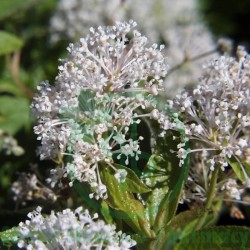
Ceanothus...
Causes & Symptoms for Ceanothus Americanus...
200 BDT
-
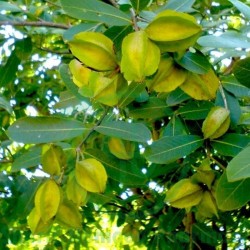
Arjuna Ø MT
Terminala Arjuna Mother Tincture is an...
180 BDT
-
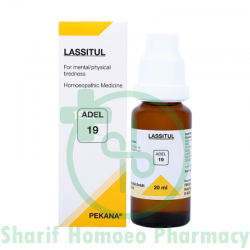
LASSITUL...
FOR MENTAL/PHYSICAL TIREDNESS
460 BDT
-
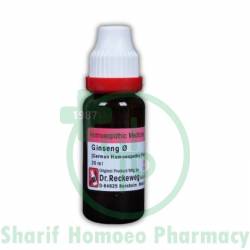
Dr. Reckeweg...
Product highlightsImproves your digestive...
600 BDT
-
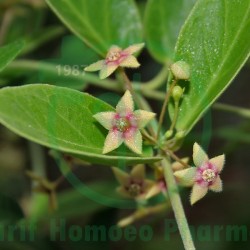
IPECAC
Prepared from the Ipecac root, also known as...
200 BDT
-
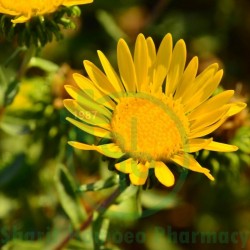
Grindelia...
Grindelia Rob Mother Tincture is useful for the...
180 BDT
-
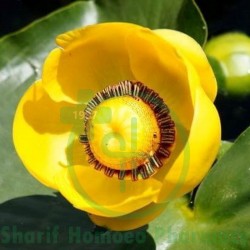
180 BDT
-
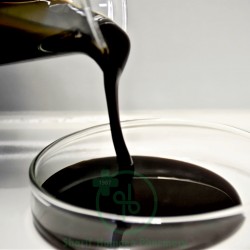
Petroleum
Product HighlightsUsed for mental weakness...
230 BDT
-

HYDRASTIS
Hydrastis has anticatarrhal, antiinflammatory,...
230 BDT
-
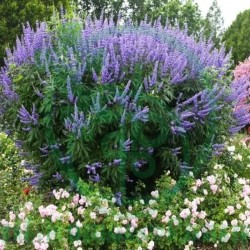
Agnus Cast Q MT
Agnus castus is also used in human homeopathy...
180 BDT


